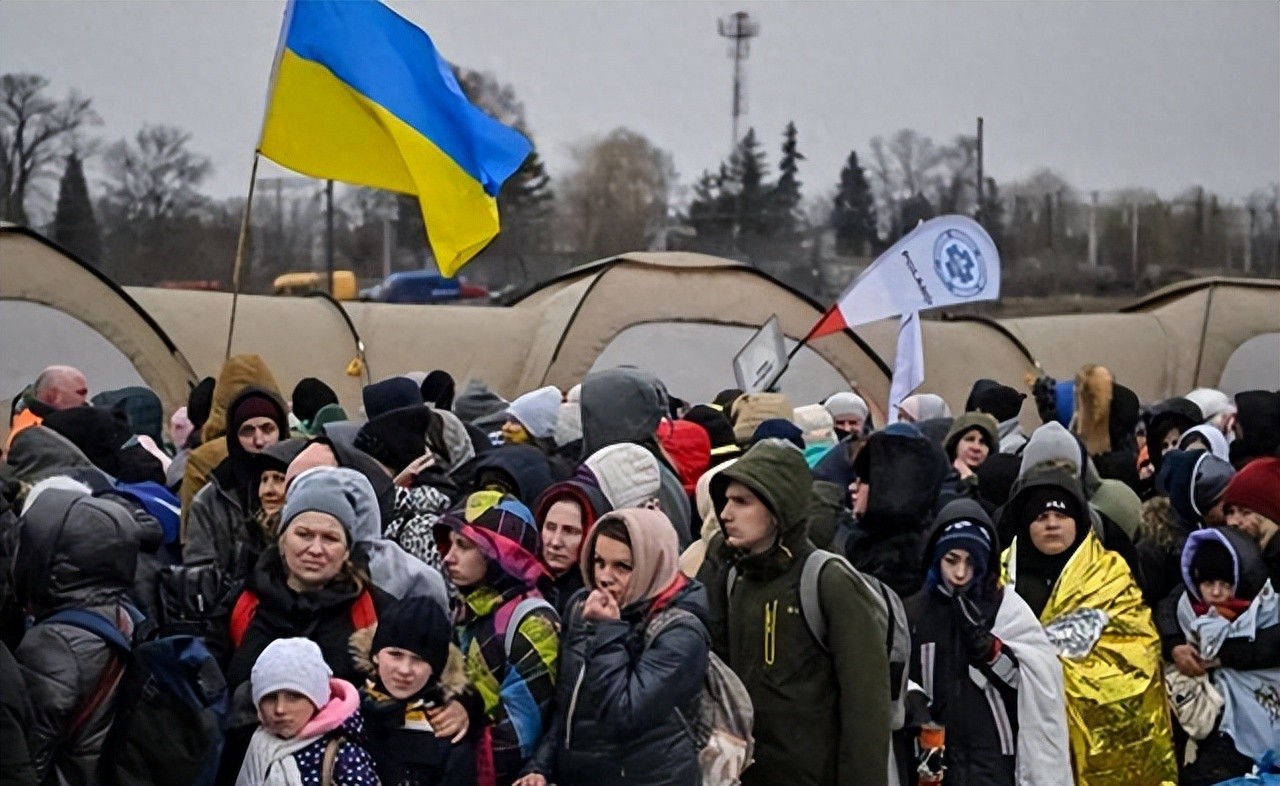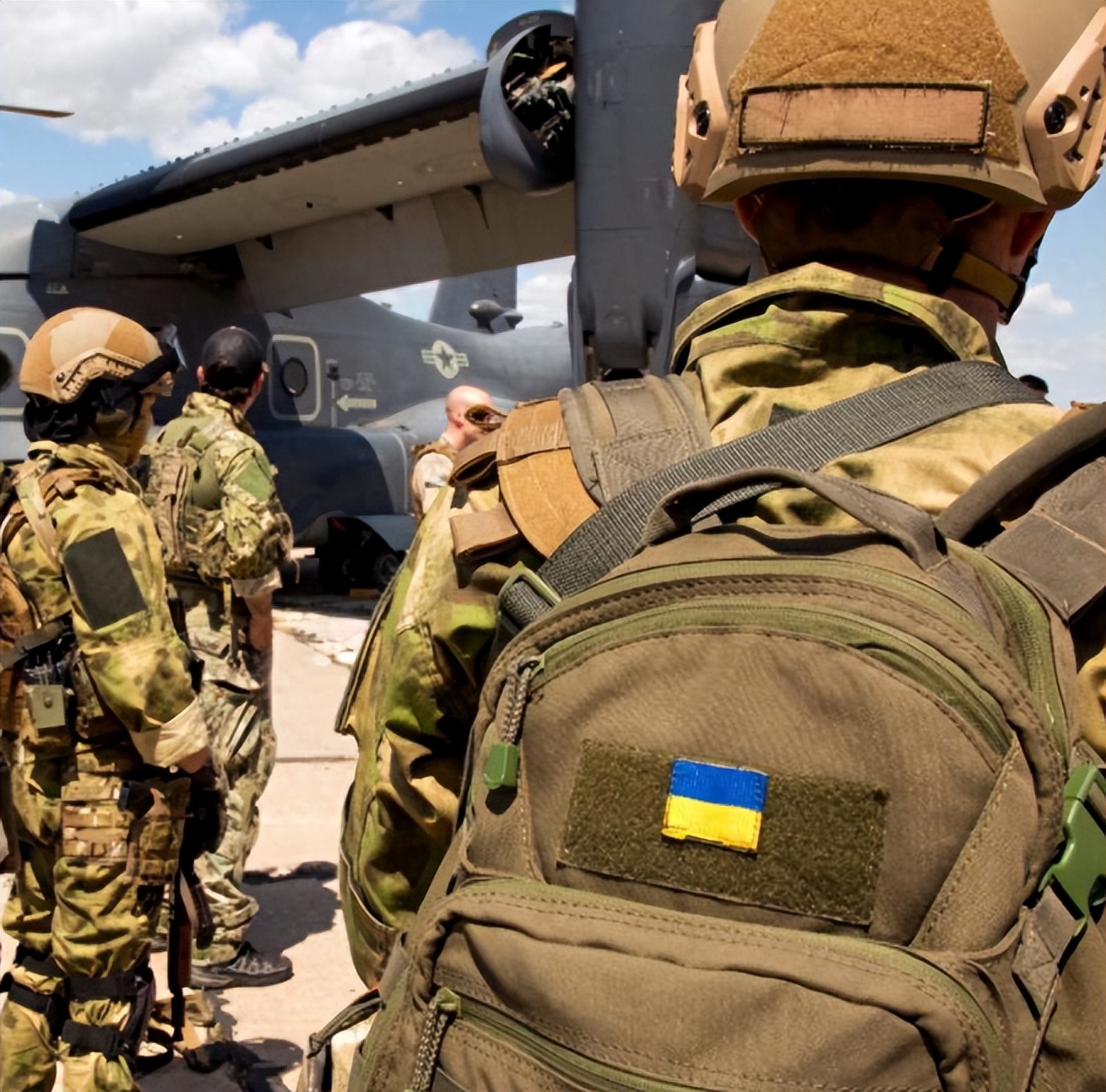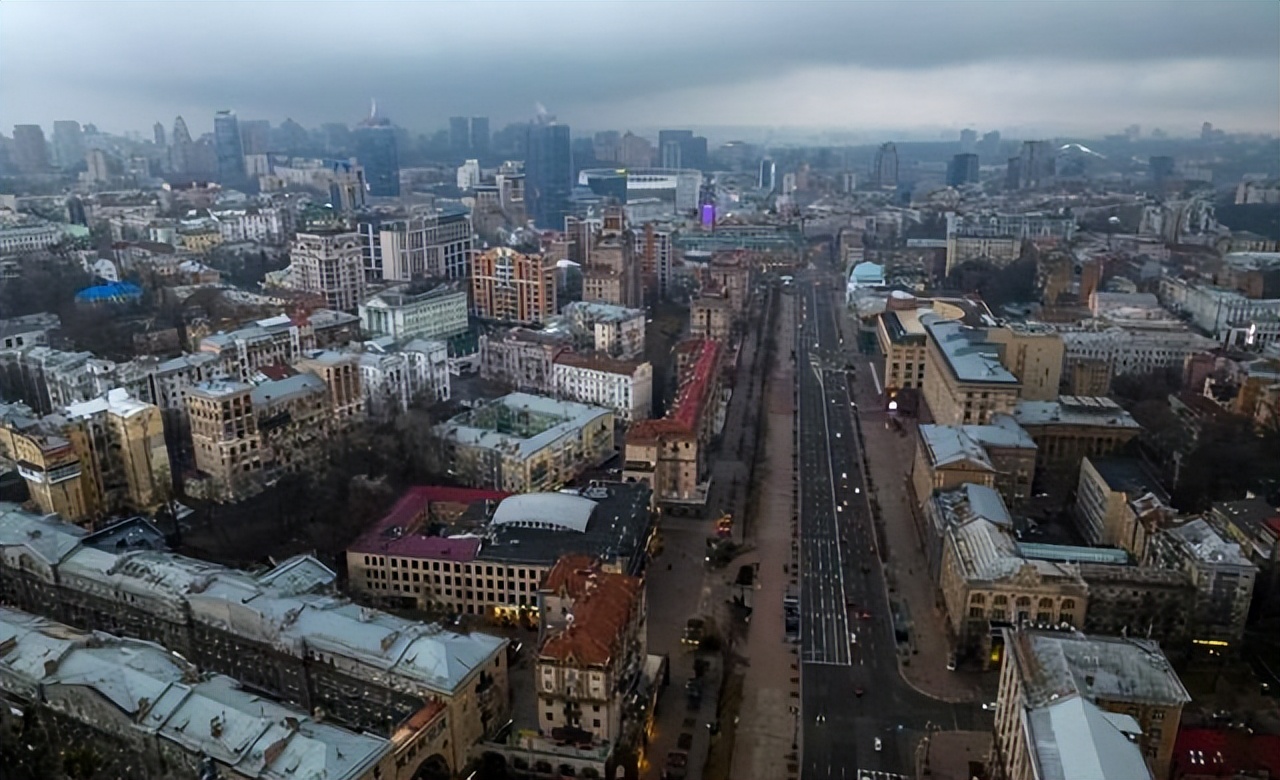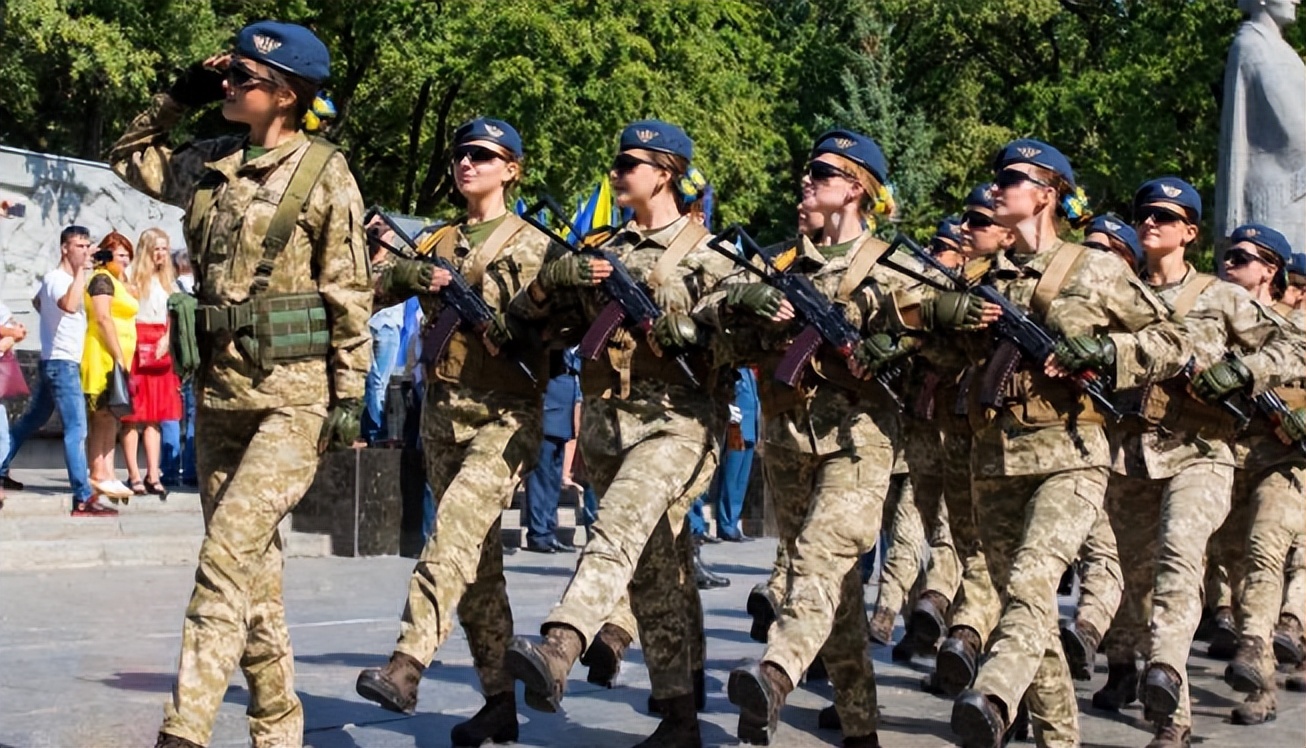The Jamestown Foundation, an organization specializing in research on Eurasia, issued a report in July 2023, pointing out that Ukraine’s population problem has reached a critical point.
The report states that Ukraine’s population has fallen from 48 million around 2000 to approximately 31 million today, a period marked by political turmoil and waves of migration. The situation worsened after the war, accelerating population loss.
Think tank experts estimate that Kyiv’s actual population is likely around 20 million, excluding the 2 million in occupied territories and those who fled after the war. EU data shows that between 2014 and 2022, 4.9 million Ukrainians received residence permits in the EU, while Russia also absorbed 3 million.
Figures from the Polish Institute of Economics show that Ukrainians opened 16,000 small businesses in Poland in 2022, and 14,000 more in the first half of 2023. These people are not refugees. They can support themselves, and once they have taken root, they don’t want to go back.

Consider this: this population decline is no small matter. United Nations data shows that Ukraine’s population has dropped by 10 million since 2022, reaching just 37.4 million by 2024 and falling further to around 34 million in 2025. With the birth rate collapsing and the number of children halving, the working-age population is projected to be one-third less by 2040.
There are 10.7 million pensioners, more than half the total population. The country already has a severely aging population, and when war breaks out, working-age men are drafted into combat, leaving the remaining elderly and women unable to support the economy. The report estimates that Ukraine mobilized nearly 2 million people, or 10% of the total population, after the outbreak of war.
The government initially said it would mobilize 1 million troops, but the actual number was higher, as shown by the number of newly formed brigades, casualty data, and estimates from the Department of Veterans Affairs. The large number of troops deployed meant that the proportion of men of military age was nearing the bottom.
Of the 20 million population, over 50% are elderly, and half of the remaining population are women, with some men being minors. If the military enlistment rate drops to 10%, how long can this country survive?
Economically, this is a nightmare. The Jamestown Foundation cites historical examples, such as during the Vietnam War, when South Vietnam mobilized 11.7% of its working-age male population, resulting in economic collapse and a complete dependence on US support. Finland mobilized 14% of its population during World War II, also leading to numerous domestic problems.
Ukraine is experiencing a similar situation. Parliament acknowledges staffing shortages in the energy, industrial, and military sectors. The military reported in July 2023 that it had only achieved 50% of its recruitment target for three consecutive months. Media reports indicate that 78% of Ukrainians have relatives or friends who were killed or wounded in the war. This isn’t just a shortage of manpower; it also involves the breakdown of social structures.
The think tank concluded that Ukraine’s available human resources are nearly exhausted. Western aid isn’t given for nothing, and the country faces a mountain of debt that it can’t repay. European countries are being asked to repatriate Ukrainian immigrants, but numerous legal obstacles make this difficult. With such a population loss, what future does the country have?

Looking at Russia, they too face demographic challenges, but Ukraine’s impact has been even greater. Russia’s birth rate fell to 1.22 million in 2024, a record low, while its death rate rose to 1.82 million. Hundreds of thousands of soldiers died in the war, and 800,000 emigrated. However, Russia’s population is larger, at over 140 million, so the losses were not as severe as Ukraine’s.
Ukraine’s birth rate has fallen to one of the lowest in the world, while its death rate is the highest. By 2024, the population decline rate exceeded 1%. Ministry of Justice data predicts that the population could drop to 28.9 million by 2041 and 25.2 million by 2051. By 2100, the population could be even worse, with only 15 million remaining. War not only kills soldiers but also destroys the desire to have children.
The United Nations reported over 28,000 civilian casualties and over 2,520 child casualties. 12.7 million people will require humanitarian assistance in 2025. This is not a short-term problem; it is a trauma that will last for generations.
Zelensky’s transition from entertainment to politics is quite a legend. Born in Krivykh in 1978, he is of Jewish descent. One of his parents is a math teacher, and the other is an engineer. He lived in Mongolia for four years as a child. After returning to Ukraine, he fell in love with acting and joined the comedy troupe “Kvartal 95.” He studied law in college, but chose not to pursue a career in law, instead entering the entertainment industry.
In 2006, he competed on the Ukrainian version of “Dancing with the Stars.” In 2015, he starred in the popular TV series “Servant of the People,” playing a teacher who became president. In 2019, he ran for president and won with 73% of the vote.
After taking power, he pushed for land reform. When war broke out in 2022, he remained in Kiev to direct the government. In 2025, he was still struggling with a government reshuffle, nominating Yulia Sviridenko as the new prime minister on July 14th, replacing former Prime Minister Shumigal. This was the biggest reshuffle since the invasion, aimed at boosting weapons production and the war effort.
Zelenskyy said he would raise the proportion of domestically produced weapons to 50% within six months. He also went to the Rome conference to seek help, asking for frozen Russian assets to rebuild the economy.

But can these actions reverse the situation?
In March 2025, he accepted Trump’s ceasefire proposal and met with him at the White House. In April, he signed a US mineral sharing agreement. In June, after Russia attacked Kyiv, he continued to appeal for aid.
The mobilization was extended to the 16th, ending November 5th. The army suffered heavy losses, with 43,000 soldiers admitted killed in December 2024, updated to 45,100 in February 2025, and 380,000 wounded. Only 28,000 soldiers were recruited, resulting in a loss of 38,900.
The economic reconstruction cost $524 billion, and the debt is overwhelming. Zelenskyy is pushing for a dual citizenship law, signed in June 2025, in an effort to attract overseas citizens back to the country, but Europe is not cooperating with repatriation. Poland and Lithuania have offered promises of assistance, but their efforts are limited.
The demographic crisis is deepening, with the UN stating that 36% of the population requires assistance. Russia has suffered over one million casualties, but Ukraine’s mobilization was insufficient, with only 90 square kilometers controlled during the Kursk advance. Think tanks are only now realizing that the war is being fought by proxy, with NATO providing the money and the guns, and Ukraine providing the manpower. But the manpower is running out.
The Jamestown Report stated that the population had fallen to a critical point, the military was unable to recruit, and the economy was collapsing. Historical examples show that countries cannot sustain such a scale of mobilization. The Ukrainian parliament acknowledged that departments were understaffed and factory production lines were idle. Media reports indicated a high rate of casualties among family members and deep social trauma.

In the long run, Ukraine has no future. Its population is expected to reach 15 million by 2100, with a sharp decline in the working-age population. War has accelerated aging, and low birth rates coupled with immigration have crumbled the nation’s fabric.
Under Zelenskyy’s leadership, aid has been sought repeatedly, but debt has piled up, and reconstruction seems far from certain. A think tank report points out that this isn’t a temporary fix; it’s a permanent damage. Russia also faces a demographic crisis, but the base is large, so the impact is minimal. Ukraine, a small country, has suffered devastating losses. The West woke up late, and now it’s difficult to remedy the situation. With a depleted population, the war can no longer be fought, and the country’s future is bleak.
To put it bluntly, this is a vicious cycle. Wars require people, but without them the economy collapses, and with a collapsed economy, no one returns.